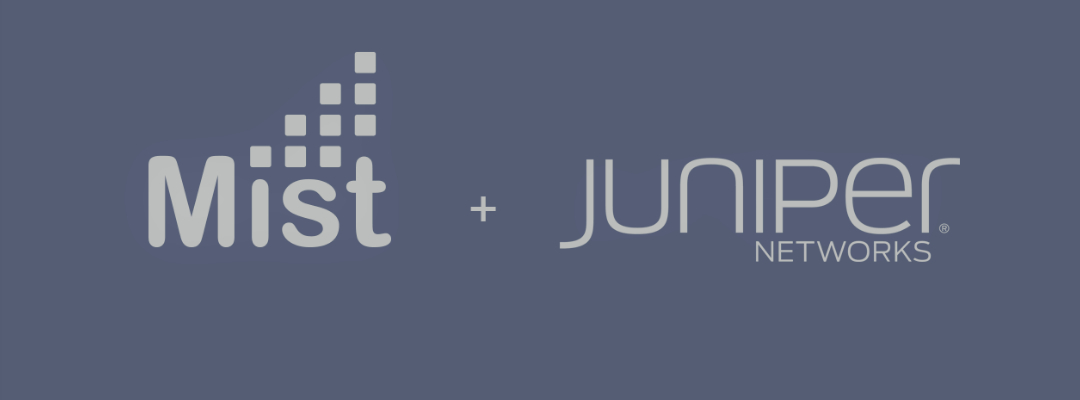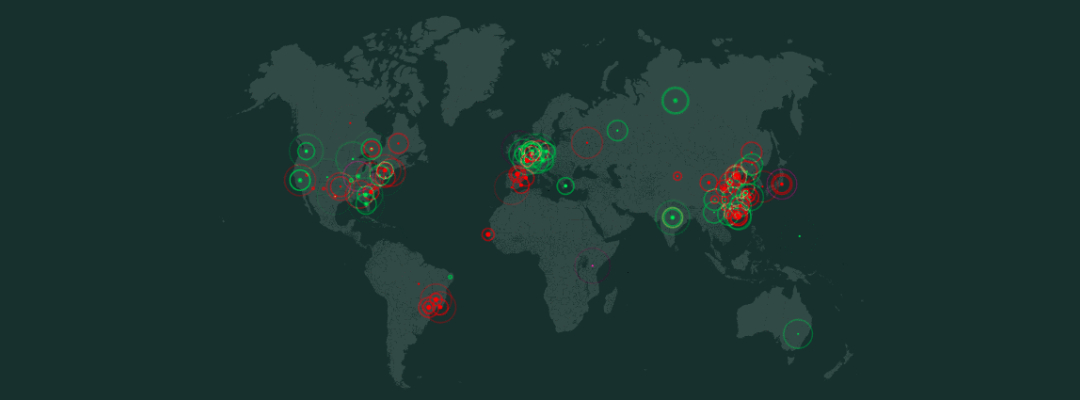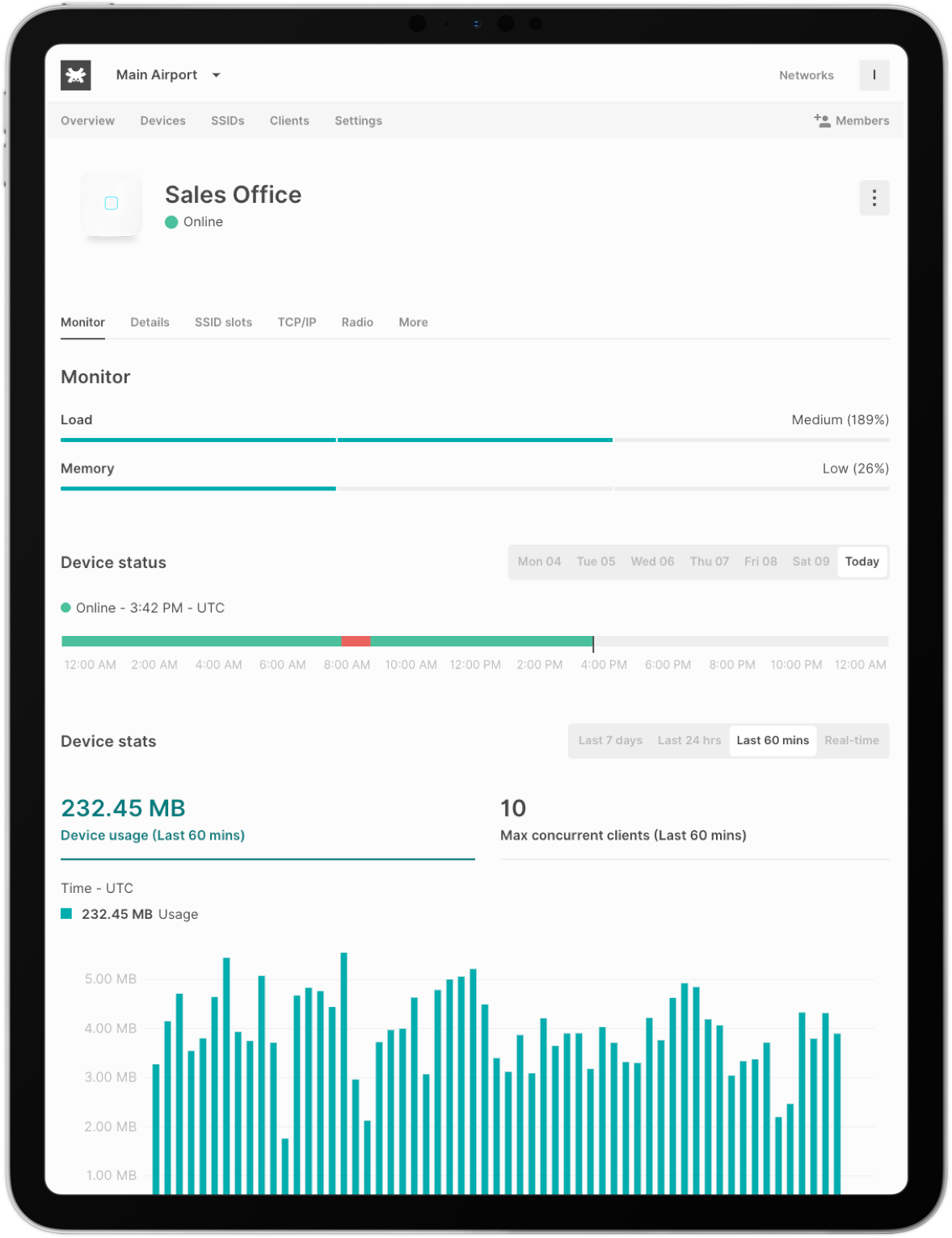What WiFi hotspot growth means for your business
What WiFi hotspot growth means for your business

The world is quietly experiencing a “hotspot revolution.” Since 2015, the world’s total count of public WiFi hotspots has grown exponentially. A Cisco research found 64.2 million public hotspots operating at the end of 2015. And this growth is accelerating—by the end of 2022, Cisco projects 432.5 million global public hotspots.
Thanks to near-ubiquitous public WiFi, on-demand connectivity is no longer seen as a convenience or privilege. Just as you’d expect to find running water in every public bathroom you visit, you’re entitled to expect publicly accessible WiFi for your laptop or mobile device.
GM, an American automaker, includes optional WiFi data plans in many new vehicles. Comcast, an American telecom provider, is using its millions of home wireless routers to build a massive WiFi hotspot network accessible to anyone with a Comcast account. Cafes without WiFi are now virtually unheard of. Add to that the fact that potentially signing up to use a hotspot over registering for your own WiFi account in the US might be cheaper, and hotspots might just be the solution to the American internet provider problem.
Simply put, it’s impossible to ignore the incredible rate of WiFi hotspot growth and the public’s dramatically escalating standards for convenient access. Here are four potential takeaways for your business.
How WiFi hotspots can benefit your business
WiFi isn’t just for cafes and train stations
There was a time when WiFi was a novelty that could only be found at coffee shops and major public gathering places, such as transit hubs and city parks. But that hasn’t been the case for some time. In the past several years, WiFi has morphed from a value-added customer perk to a must-have feature for virtually any business with any sort of public space component.
Here’s a small sampling of the myriad uses for public WiFi in various economic niches:
- Retail. In-store WiFi access points provide on-demand access for prospective customers as they browse inventory, allowing for easy price comparisons, photography, and peer consultations. Retailers with mobile pay platforms can capture more revenue with mobile “buy now” buttons that finalize sales before prospects leave the store.
- Healthcare. Patients and their family members can spend significant amounts of time waiting for appointments and news in public spaces. WiFi in waiting rooms allows these people to stay connected during those long, often tedious periods. Likewise, patients well enough to surf the Internet (and allowed to use computing devices) appreciate on-demand access in hospital rooms and wards.
- Hospitality. Hotels have turned the corner toward free, on-demand public WiFi in all public spaces, including lobbies, restaurants, lounges, conference areas, gyms, pools, and outdoor gathering places. For many hotels, guests and their associates represent a huge captive audience that may be receptive to branded marketing, such as ads for the hotel bar’s happy hour and room discounts for longer stays.
- Transportation. Public WiFi is a natural fit in airports, train stations, bus depots, public plazas, and even trains and buses. Many cities have deployed public WiFi networks in underground rapid transit stations, subway cars, and other transit vehicles as well, creating new advertising bandwidth that complements existing billboard and wall ads in these places. And like hotels, airports’ gate areas boast massive captive audiences and dozens—or hundreds—of nearby businesses that could potentially market their services. Plus, airports are big places. To properly accommodate demand, airport restaurants, cafes, and lounges all need their own APs—a major opportunity for enterprising resellers willing to play in the transportation segment.
- Education. Many university campuses are now fully covered by public WiFi networks, to the point where institutions that have yet to deploy campus-wide WiFi are viewed as laggards. Though data remains limited on this point, it’s conceivable that a lack of public WiFi could affect student enrollment decisions.
- Sport. From youth facilities to professional arenas, sporting environments offer a rich opportunity for WiFi resellers. Fans snap pictures, share social status updates, and browse for information at incredible rates. What’s more, captive, often festive fans comprise an airport-scale audience that’s receptive to targeted marketing.
This stunning diversity of WiFi use represents a tremendous opportunity for entrepreneurs who resell WiFi services and maintain APs. As public WiFi migrates from “optional expense” to “overhead cost” on ever more balance sheets in ever more niches, more use cases are sure to emerge. And that promises to make it easier than ever to sell operators on the benefits of onsite hotspots.
Social Engagement Is Exploding
According to Hootsuite, in 2018 the 88% of Facebook users accessed the platform via mobile device, and 95% of Facebook visits were made on smartphones and tablets. Only 31.8% of visits were made on desktops or laptops. And Facebook is just one example of the clear-as-day nexus between mobile devices and social media. Twitter, Instagram, Pinterest, and various regional social networks have become mobile forces to be reckoned with.
Much of this exploding social engagement is happening on public WiFi networks, as mobile users visit retailers’ websites, check in at cafes or restaurants, share pictures of merchandise with friends, or simply call out a venue in a social post.
As WiFi hotspot access grows, users will become increasingly accustomed to accessing social media via public WiFi—and thus for late-adopting clients to see the value of offering WiFi access to the general public. Clients can and should provide social login capabilities on their customized splash pages, allowing visitors to log into the network using their Facebook, Twitter, LinkedIn, or even VKontakte accounts. Every visitor who completes the social login process provides valuable demographic and contact information, opening up onsite and future marketing opportunities.
Demand for Premium WiFi Has Never Been Higher
Now that public WiFi is a necessity for businesses and institutions looking to remain competitive, it’s natural to assume that individual users—clients and customers—are no longer willing to pay for it. This is certainly true in fragmented markets, such as food service, where customers can easily leave an outlet that charges for WiFi and walk down the street to a competitor that does not.
But it’s not true everywhere. Captive customers, such as sports fans and air travelers, are still willing to pay for basic WiFi. More importantly, affluent customers and those who aren’t personally footing the bill for their data usage (such as business travellers with expense accounts) are willing to pay for higher tiers of WiFi service, notably in crowded environments with limited bandwidth. Hotels, convention centres, and transport nodes are particularly well-suited for tiered or premium WiFi services, which offer an additional opportunity for clients to monetize their networks and APs.
There may even be opportunity for downmarket clients: According to a Cisco white paper, Canadian coffee-and-donuts chain Tim Hortons provides faster connection speeds, an abbreviated sign-in process, and unlimited data use for customers who provided detailed demographic information at first login.
WiFi Roaming Offers New Data Capture Opportunities
The same Cisco white paper outlines an additional opportunity to forge new revenue streams from the ongoing hotspot revolution: WiFi roaming.
Like cellular roaming, WiFi roaming allows mobile users access to public hotspots (or home hotspots with public-facing access, such as the public-private network Comcast is currently planning) under other carriers’ purview. Many carriers now offer roaming arrangements, often on an international scale, for a fixed monthly fee. According to Cisco, “The ultimate goal is to make WiFi roaming as smooth and easy to use as the [cellular] network.”
As WiFi roaming becomes a standard component of mobile service, costs are likely to drop, enticing more mobile users to take advantage of the service and connect to out-of-network WiFi hotspots that they might previously have avoided. Every user who does so creates a new opportunity for WiFi clients to monetize their APs—particularly if they use a customized splash page with social sign-in capabilities to capture valuable data from prospective customers. Captured data from previously unreachable customers is an enticing prospect for advertisers—one that WiFi resellers would be advised to hit hard and often when describing the benefits of public WiFi to prospective clients.
Final Thoughts
It’s no longer debatable: The hotspot revolution is irreversible. For businesses with any sort of public space component, the situation demands an urgent, focused response. Lost time could equal lost revenue—and, perhaps, a permanent loss of market share to competitors quicker to embrace the power of public WiFi.
The good news is that the hotspot revolution creates a tremendous opportunity for entrepreneurs who recognize the potential of cloud-managed WiFi networks. With public WiFi no longer an optional perk for businesses that want to remain competitive, the concept nearly sells itself. All you need to make your cloud-managed WiFi business work is a clear vision and a willingness to put in the necessary work.
If you need a software to easily set up and manage your wireless networks, Tanaza offers the best-in-class cloud-based software for WiFi network and social hotspot management. Its Hotspot System allows WiFi network administrators to set up and configure a captive portal for their public hotspots, which can be easily customized with Tanaza’s splash page editor. Through the captive portal, WiFi users can authenticate using their personal credentials (such as their email or phone number) or their preferred social networking account (Facebook, Twitter, Instagram, LinkedIn…). Businesses that provide WiFi to their clients can leverage the captive portal as an advertising tool, by inserting image or video advertisement directly on the splash page, and as a marketing tool by collecting useful WiFi user data and segmenting it for marketing purposes. By integrating Tanaza with third-party applications, businesses can use the data collected to communicate information via targeted email marketing campaigns and to interact with users with engaging content that will be seen by them during the authentication process.
Published by Claudia Barbarisi, written by Flynn Robinson.
Flynn is a self-employed writer and programmer, whose days generally involve a coffee shop or two with excellent, free WiFi.






